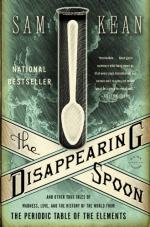|
This section contains 1,711 words (approx. 5 pages at 400 words per page) |

|
Robert Bunsen
Robert Bunsen was a German chemist after whom the Bunsen burner, a ubiquitous tool in chemistry labs, is now named. Bunsen did not invent the burner, as many people assume, but improved the design and popularized the tool in the mid-1800s. Bunsen worked significantly with arsenic and developed what is still today the best antidote to arsenic poisoning: iron oxide hydrate. After then studying volcanos and geysers, Bunsen returned to studying chemistry at the University of Heidelberg in the 1850s.
It was at Heidelberg that Bunsen made another significant contribution to chemistry that would prove particularly important in the study of elements. Bunsen invented the spectroscope, which uses light to study elements. Each element produces a unique band of colored light when heated and a spectroscope allows a scientist to see that light and thus identify new elements. In addition to helping scientists identify unknown...
|
This section contains 1,711 words (approx. 5 pages at 400 words per page) |

|




